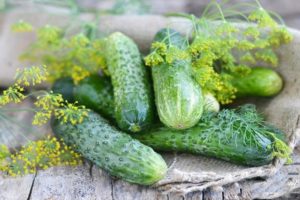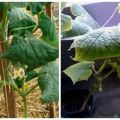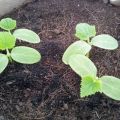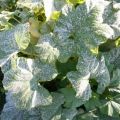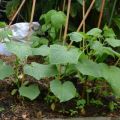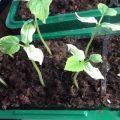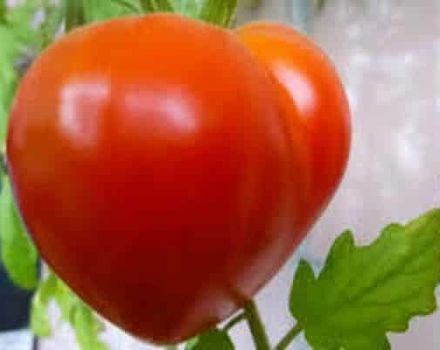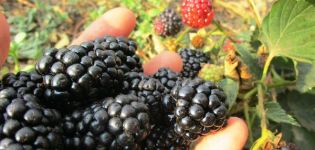Folk remedies and drugs for the treatment of root rot in cucumbers
Root rot of cucumbers leads to significant crop losses in greenhouses. Our advice will help summer residents pay attention to dangerous symptoms in time, understand their causes, and choose the best way to fight. The information is especially useful for novice gardeners who have unheated greenhouses or greenhouses.
Root rot pathogens
Root rot on cucumbers is caused by a fungus from the genus Fusarium. A fungal infection can affect plants of any age. The disease is most often focal in nature, spreads with soil and seeds. In some cases, the nature of the infection is not fungal, but bacterial.
Weak plants are susceptible to infection. Excessive humidity of the air and soil provokes a fungal disease. Summer residents of any climatic zone can face this disease. If the vascular system of a plant is affected by a fungus, then the plant develops fusarium wilting. Infection in the tissues of the root system causes rotting of the root part of the plant in the soil.
A fungal infection can persist in soil for a long time. Leaving uncleared plant residues in greenhouses, greenhouses, summer residents contribute to the emergence of root rot of cucumbers in subsequent seasons and the gradual accumulation of fungal spores and other infections in the soil.
By what signs summer residents recognize the root rot of cucumbers
Let's figure out by what signs you can calculate the root rot in cucumbers. On seedlings, signs of root rot are extremely rare. Symptoms appear after transplanting cucumber seedlings into a greenhouse or soil. Sluggish leaves on cucumber whips are a reason to think.
The mistake is made by the summer resident who runs after the watering can and waters the withering plants in large quantities. Always check the condition of the roots of cucumbers before watering. Make sure there is no root rot. To do this, carefully remove the soil from the stem with your hand and go slightly into the ground in the area around the stem.
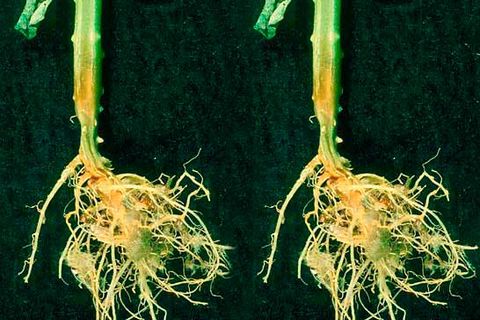
Cucumbers are affected by root rot with the following symptoms:
- The stem at the base becomes thinner, acquires a yellow or brown tint.
- The plant has cracks at the bottom of the central shoot.
- The roots of the cucumber are brown and begin to soften.
- Yellowing of leaves in the lower zone of the stem.
- Frozen, wilting ovaries (advanced stage).
The presence of these signs in plants suggests that cucumbers have root rot and treatment should be started immediately.
Causes of diseases
Knowing what can be the cause that provokes the development of root rot, you can avoid infection in the future, leading to the rapid death of cucumber bushes. Here is a list of factors under the influence of which root rot of cucumbers in the greenhouse occurs:
- violation of crop rotation;
- lack of autumn-spring tillage and structures in the greenhouse;
- the acquisition of seeds infected with a fungus for cucumber seedlings or when they are sown in the ground;
- contaminated soil;
- excessive watering;
- damp, cool weather;
- cold water for irrigation;
- daily fluctuations in air and soil temperature;
- high air humidity due to poor ventilation of the greenhouse.
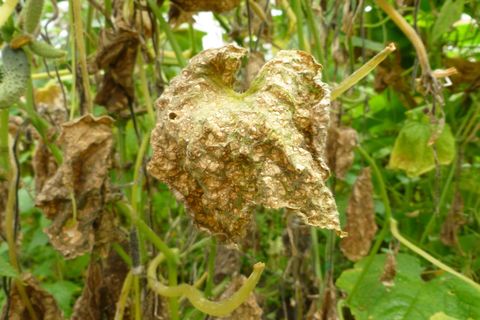
Water norm - 4 - 5 l / m² before flowering, 9 - 12 l / m² during the formation of ovaries (fruits). The optimum water temperature for irrigation is 25 ° C.
Infection mechanism
There are many ways a fungal infection can enter a greenhouse. The fungus can be brought by the summer resident himself on shoes or together with the soil, renewing the topsoil. The infection can accumulate in the soil for years. As a sacrifice, she chooses a weakened plant - a cucumber, which received a mechanical injury when transplanted into the soil or during care.
Ways to combat rot
Let's try to figure out how to deal with root rot. It is necessary to stop watering the diseased plant, apply folk remedies.
Folk methods to combat rot
At the summer cottage, you can always find chalk, coal or ash. Sprinkle the root collar, the bare part of the rhizome and the base of the stem with these powdered substances. They will help dry the wounds and stop the spread of infection, slow down rotting.
A chatterbox prepared according to a simple recipe will save plants from root rot. For its preparation you need chalk - 3 tbsp. l., copper sulfate - 1 tsp., water - ½ liter jar. Lubricate the lower part of the stem and the upper root part with the resulting solution.
Rot chemicals
If the cucumber bushes turn yellow and there is a strong wilting, only folk remedies cannot be dispensed with. We'll have to resort to chemical pesticides. Adhere to the following scheme:
- When cucumbers show signs of severe wilting, dilute 20 ml of Previkur pesticide in 10 liters of water, water the cucumbers.
- After 5 days, apply watering with "Fitolavin" solution, prepared from 20 ml of the product and 10 liters of water.
- Treat the soil in the greenhouse from the fungus with the preparations "Gamair" and "Alirin-B". Processing is necessary to restore beneficial microflora that has suffered from the use of chemicals.
Biological products for cucumber rot
For the treatment of rot in cucumbers, bacterial preparations can be used. You can buy "Alirin-B". The product is produced in the form of tablets, does not accumulate in fruits and leaves, it is not dangerous for humans. Purpose - the fight against all kinds of fungi. In plants treated with this agent, the level of nitrates decreases, the content of ascorbic acid in cucumbers increases.

Greenhouse plants can be treated with Gamair fungicide, which is available in powder or tablet form. The biological product helps against many types of fungus. It is used not only to treat the manifestations of the disease in greenhouse cucumbers, but also to disinfect the soil in a greenhouse, greenhouse or open ground. The decayed root can be treated with a solution of "Gamair", prepared from 5 liters of water and 1 tablet.
Stops cucumber rot by treatment with Glyocladin, an effective microbiological fungicide. Especially well helps with fusarium plants planted in soil fertilized with organic matter in excess of the norm.
Almost all biological products can be combined with insecticides and mineral fertilizers, humates... These formulations are easy to use, soluble in water, can be sprayed on leaves and applied to the soil using drip irrigation systems for greenhouses.
Prevention of plant infestation
Prevention should be started in early spring, treating the seeds before planting, because one of the ways the infection spreads is low-quality planting material.
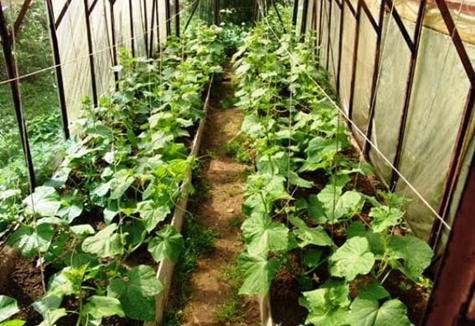
The easiest and most affordable way to disinfect (seeds, soil) is a solution of potassium permanganate. This is an old and time-tested method, but for reliability, you can purchase the drug "Fitosporin" and treat the seeds with it before planting. It is much better than treating root rot in cucumbers.
Potassium permanganate and "Fitosporin" can be treated with planting soil. Do this not on the day of planting, but a week or two before. Soil disinfection will save cucumbers from many diseases and pests.
Proper greenhouse maintenance
Annual autumn cleaning of the greenhouse prevents the accumulation of harmful fungi in the soil and structural elements. Mandatory measures for the maintenance of the structure:
- Processing of wooden structural elements with copper sulfate.
- Using a solution of laundry soap for cleaning metal and galvanized parts.
- Wash greenhouse glasses or polycarbonate with soapy water and rinse them with a hose stream.
- Thoroughly remove all plant residues, matings and other functional debris accumulated in the greenhouse over the summer.
If there were diseased plants in the greenhouse in the summer, disinfection can be carried out in the fall with a sulfur checker, given the fact that beneficial microorganisms in the upper layer of the soil die in the same way as harmful ones. In the spring, to restore microflora, treat the soil with any modern biological product.
Follow the scheme of planting cucumbers
We must not forget about crop rotation. If you plant the same vegetable crop in the same place every year, an infection will accumulate in the soil - an outbreak of the disease is inevitable. Re-use of the area for cucumbers is possible only after 3 years. In greenhouses, the topsoil is changed every two to three years. They take land from the beds where the following plants grew:
- onion;
- early cabbage (white cabbage);
- garlic;
- salads;
- beet;
- potatoes.
Failure to comply with the manufacturer's recommended planting scheme for cucumbers is the most common mistake of summer residents. In pursuit of a large harvest, cucumbers are planted too thickly, provoking diseases. Due to the close location of the bushes, both pests and diseases spread through them at great speed. It is very difficult to process thickened plantings, even early diagnosis of diseases is difficult.
What diseases of cucumbers summer residents need to know
Difficult weather conditions, poor agricultural technology, lack of nutrition are the main causes of diseases leading to a decrease in yield and even death of plants. Cucumbers, both greenhouse and ground, have diseases:
- powdery mildew and downy mildew;
- gray and white rot;
- fusarium;
- olive spot;
- copperhead;
- mosaic;
- rot of the leg.
Powdery mildew outbreaks usually occur in wet weather, with a decrease in daily air temperature. First, a white bloom can be seen on the surface of the leaves.
Leaves affected by the fungus turn yellow and dry out. Spores persist on plant residues and in the soil. Spores are easily carried along with air movement.
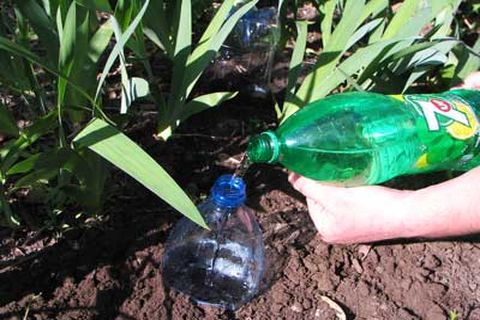
Mullein infusion helps to cope with yellowing of leaves. Strain 1 liter of infusion and add 1 tbsp. l. urea. After complete dissolution of the fertilizer with a solution, you can spray cucumber bushes infected with powdery mildew. Yellow leaves should be removed and destroyed.
Plant leaves suffer from downy mildew. Brown spots can be seen on the outer surface, and a gray-purple bloom on the lower part. As a result, the plant loses its leaves, which dry out and fall off.
Recommended measures for the prevention of downy mildew:
- Eliminate drafts in the greenhouse.
- Conduct fertilizing with potassium and phosphorus, introducing them into the soil.
- Ventilate the greenhouse to maintain the required air humidity.
Plants can be treated with drugs. "Topaz" and "Oxyhom" help. Solutions must be prepared according to the instructions attached to the preparations. After processing the plants with a solution of the drug, the soil under them must be sprinkled with ash.
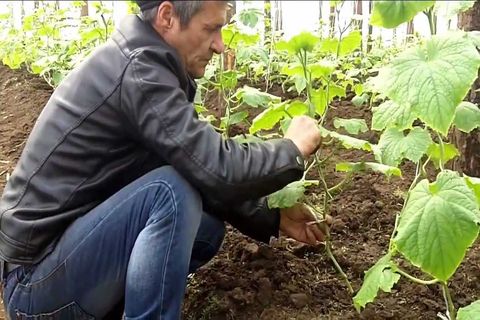
You can definitely name the reasons for the occurrence of olive spot in plants:
- drafts;
- high soil moisture;
- use of low temperature water for irrigation;
- low temperature (air, soil).
A sign of plant infection is dry sores that appear on cucumber lashes. They are covered with an olive-colored bloom. The leaves suffer from fungus, are covered with spots with a light brown color. The cucumber skin becomes uneven due to olive dents. Dents gradually turn into irregular ulcers.
Olive spot in plants needs to be treated in the system. You need to stop watering the diseased plant. The next stage of treatment is the processing of leaves and stems in cucumbers. Processing can be carried out using 1% Bordeaux liquid or other Oxyhom, popular among summer residents. An aqueous solution is prepared from Oksikhom: 20 g of the product for 10 liters of water.
Fusarium is found in the soil. It enters the stems through the root system. The first visible signs of infection in cucumbers are withering leaves at the bottom of the stem. Later, the leaves located above the stem turn yellow.
At the last stage of the disease of the lash of cucumbers, the leaves become very thin and turn brown. The plant dies. It is impossible to cure a cucumber. The bush must be destroyed by burning. Fusarium plant disease is better prevented than treated. To do this, you need to sow only pickled cucumber seeds into the soil treated with fungicide.
Gray mold spreads through air or liquids through spores of the fungus Botrytis cinerea Pers. Factors affecting the degree of plant damage:
- A sharp change in air temperature from high to low.
- Using cold water to water the plants.
- Lack of ventilation, humid air, condensation on leaves and stems.

You can determine the disease by the appearance of the cucumbers: weeping, brown spots are visible on the fruits. Diseased plants have cucumber whips with signs of decay, leaves with brown spots. The affected areas of the plant after some time become gray from plaque. Plaque is a spore of a fungus that spreads through the greenhouse in a draft, infecting healthy plants and soil.
You can stop the development of a fungal infection, prevent the plant from rotting. To do this, prepare a powder: 1 tsp. copper sulfate, 1 glass of ash. Powder the affected areas of the stems and leaves with this powder. The soil under the plants can be sprinkled with ash. To reduce air humidity, you need to regularly ventilate the room with plants. If the measures do not give a positive result, you will have to remove the damaged parts of the plants and destroy them.
The spores of the fungus (Sclerotinia sclerotiorum) living in the soil infect the root zone of the stem. Weeping spots are formed on the stem, overgrown with white mycelium. The infection gradually covers the entire plant, affecting the fruits.
As a preventive measure for white rot, it is recommended to monitor the level of humidity in the greenhouse. Mulch the soil in the greenhouse with dry grass. At the initial stage of the disease, lubricate areas of plants affected by a fungal infection with a paste made from chalk, potassium permanganate, water. In advanced cases of the disease, remove diseased plants along with a clod of earth.
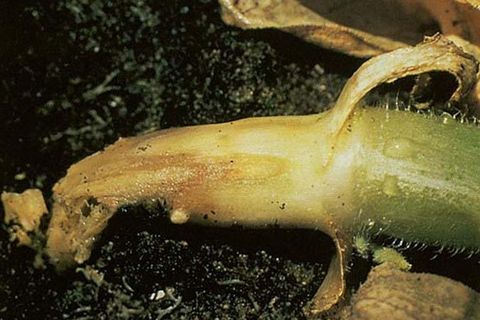
The leg of the cucumber rots if the bush is infected with a bacterial infection. At the initial stage, you can try to save the plant by sprinkling the affected area with moist peat. Water the cucumbers carefully - so that water does not get on the whips and leaves. In case of a large number of damage, it is better to destroy the cucumber bush.
Copperhead is a fungus that affects the leaves and fruits of the plant. At the initial stage, brown spots form on the leaf plates, which over time increase, blacken, dry out and crumble.
Cucumbers affected by the fungus are not suitable for consumption due to brown indentations 3 - 7 mm in diameter. The causative agents of copperhead of cucumbers are stored in a 10-centimeter layer of soil and spread through seeds obtained from the fruits of diseased plants.
Cucumber mosaic
The mosaic virus can remain active in the soil and on the roots of weeds. Virus-infected cucumbers can be identified by yellow, curled leaf plates. The fruits are covered with yellow spots, the lashes of the plants crack.
Transfers aphid mosaic virus between plants. Aphid control is the main preventive measure against mosaic on cucumbers. In addition, you need to keep the soil of the beds clean - regularly remove weeds and loosen the aisles. Treat plant mosaics with Actellik and Aktara.
Conclusion
Now you know what to do when the first symptoms of the disease appear on greenhouse cucumbers, why plant stems rot, cucumber roots in a greenhouse and what effective drugs need to be used to heal diseased plants.

